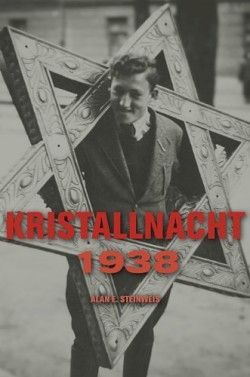Kristallnacht 1938
No matter how much the Holocaust is studied, it always manages to yield more horrifying details. Kristallnacht 1938 presents new research about the pogrom that took place in cities and towns across Germany, while challenging conventional views of the violence. Steinweis, director of the University of Vermont’s Center for Holocaust Studies, has written a scholarly but highly readable account of the causes, events, and repercussions of those fateful days.
The official pretext for the pogrom was the shooting of Ernst vom Rath, a low-level German diplomat. The shooter, Herschel Grynszpan, claimed the act as revenge for the deportation of his parents, siblings, and all other Polish Jews who had been living in Germany. In retaliation for the murder, Jews throughout Germany were harassed and beaten, their property vandalized, and their synagogues destroyed during the night of November 9 and the day of November 10, 1938. Though few people were actually murdered, around 30,000 men were arrested and sent to the concentration camps of Buchenwald, Dachau, and Sachsenhausen, where many died.
At the time, the Nazi leadership depicted the attack as an act of popular outrage, but the pogrom was in fact organized from the top down, at the instigation of propaganda minister Joseph Goebbels and with the support of Hitler himself. Nevertheless, Steinweis differs from other historians by stressing the degree of popular participation in the violence and looting, which included women and, most disturbingly, large numbers of children. “The explanation for its destructiveness lies not in advance preparation but in the readiness of tens of thousands of Germans to commit violence against their Jewish neighbors,” he writes.
Steinweis also points to the few heroes of the time, such as the Berlin police captain Wilhelm Krutzfeld, who stared down a group of Storm Troopers and saved the historic Oranienburger Strasse synagogue from destruction at the hands of the mob.
In view of the millions of people who were murdered by the Nazis during the Second World War, the crimes of the preceding years may seem beside the point. But Steinweis argues that Kristallnacht, or the “night of broken glass,” was a turning point in the steady marginalization of Jews that ultimately led to the “final solution.” His book is a fresh reminder of the depths to which ordinary people can sometimes sink. (November) [i]Ezra Glinter
Disclosure: This article is not an endorsement, but a review. The publisher of this book provided free copies of the book to have their book reviewed by a professional reviewer. No fee was paid by the publisher for this review. Foreword Reviews only recommends books that we love. Foreword Magazine, Inc. is disclosing this in accordance with the Federal Trade Commission’s 16 CFR, Part 255.

